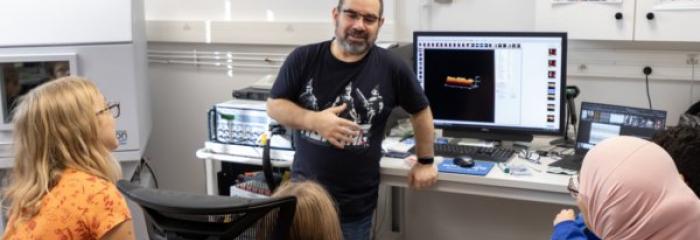Fête de la Science 2023: a great success

The Fête de la Science 2023 was a great success, with around 500 people of all ages discovering the CLYM microscopes. They were able to discover many everyday objects at scales invisible to the naked eye (right down to atoms). They were also able to talk to people who were passionate about their work: technical staff, PhD students, lecturers and researchers. Many thanks to everyone involved in making this event happen!
Here's some feedback from our visitors:
"Absolutely fascinating visit for the whole family today. A very pleasant welcome for everyone. So a big thank you to everyone for those few extra lights!"
"(...) the children were delighted and, to quote them, "loved everything" and learned a lot. So thank you again for your investment and for enabling us to teach differently thanks to this kind of outing!"
"Thank you for your welcome, your approach to popularizing science, your discussion with the children and your passion. We look forward to participating in similar scientific events in the future."
"My students were delighted with their visit. Being able to circulate in small groups allowed everyone to feel involved (...) Overall the children loved meeting you and came back with stars in their eyes. "
The INSA site was open to the general public on the afternoons of Saturday October 7 and Sunday October 8, followed by school visits on Monday October 9 and Tuesday October 10. Demonstrations were organized in atomic force microscopy (AFM), scanning electron microscopy in conventional mode (SEM) and environmental mode (ESEM), and transmission electron microscopy (TEM). Numerous everyday objects were used: insects, plant leaves, hair, salt, metals, plaster, etc., for an exploration from the millimeter to the atomic scale. The visit was complemented by a number of films.
A visit by high school students was also organized to the Jean Monnet University in Saint-Etienne. The students had the opportunity to discover the Hubert Curien laboratory's microscopy facility, including the CLYM transmission electron microscope.
image credit: Louis-Marie Lebas
